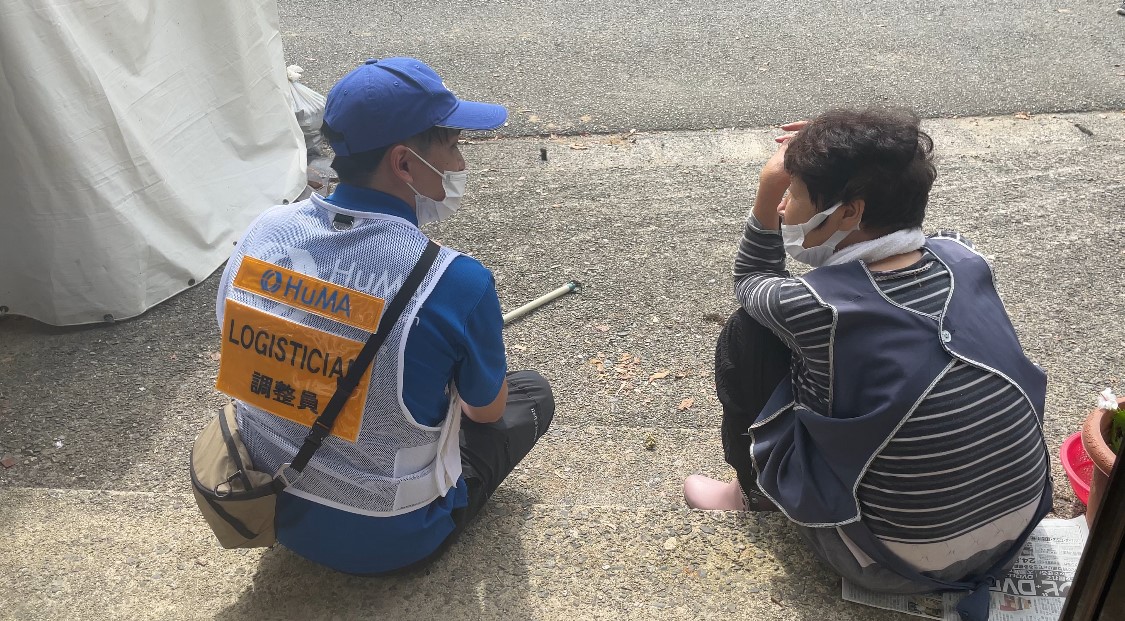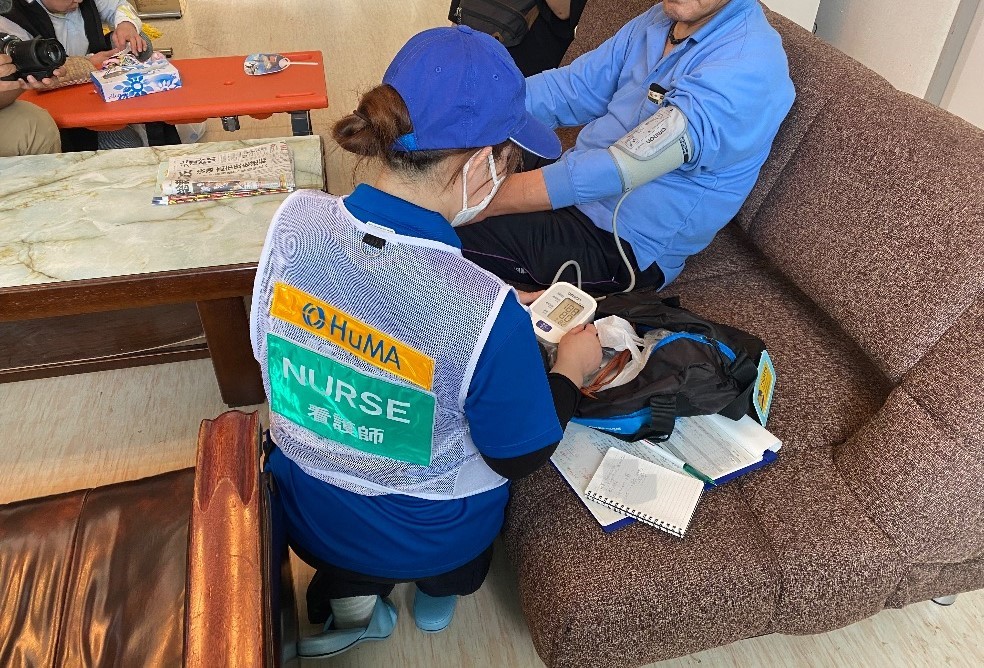On the morning of the second day of our activities, we set out on foot from the Peace Winds Japan (PWJ) Suzu Office, our base, to explore the surrounding area. A nearby temple had been completely destroyed, and gravestones lay scattered in the cemetery, a stark reminder of the ongoing recovery efforts. Later, we attended a morning meeting of the Suzu City Health Promotion Support Council. Various organizations gathered to discuss the current situation in the disaster-stricken areas and future support measures.
We visited several shelters and welfare facilities and spoke with the affected residents. At one shelter, preparations were underway for closure, and we were reunited with a person who had been affected by the January earthquake. As they prepared to move into temporary housing, they shared their complex emotions. At another facility, we discovered staff shortages and challenges related to infection control.
However, at a community center, we were greeted with a warm reunion. When we visited, someone said to us, “The blue uniforms (HuMA’s uniform) are really great! You guys are amazing! Thank you!” We were overjoyed to learn that the support we provided last time had left a lasting impression on the disaster victims.。
In the temporary housing complex, a new life was beginning. Seeing children playing on the school grounds gave us hope that normalcy was gradually returning.
Through this investigation, the current situation and challenges in the disaster-stricken areas have become clear. While medical needs are relatively low, there is a high demand for living support, especially among the elderly. Various issues, such as the need for psychological care, remain. Long-term support is essential for the recovery of the disaster-stricken areas.
 |
 |
| Listening intently to a disaster victim | Visiting a patient at the request of the director of the Suzu City Health Promotion Support Council |

